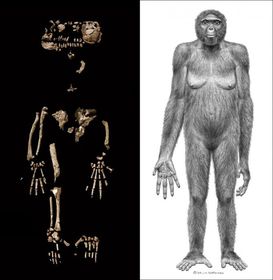ENEM World History Flashcards on WH Ch. 1 Vocabulary, created by victoria russ on 02/09/2014.
Pinned to
1049
1
0
No tags specified
|
|
Created by victoria russ
over 10 years ago
|
|
Close
|
|
Created by victoria russ
over 10 years ago
|
|

history before written records

a people's unique way of life

The study of human life and culture
Language, religious beliefs, art, tools & technology, family, class & social structure, government & laws, social customs, economic systems

anthropologists who first found prehistoric footprints, then skeletons of homo habilis in Africa
In 1974 he discovered the skeletal remains of an adult female hominid who lived about 3.5 million years ago

Discovered in Africa in 1974, the oldest hominid found to that date; nicknamed after a Beatles song, "Lucy in the Sky with Diamonds"


Old Stone Age lasted from about 2.5 million years to 8,000 BC; early humans made tools of stone
New Stone Age; began about 8,000-3,000 BC; early humans who lived during this time learned to make pottery, grow crops, and raise animals
name for the Lucy species; lived 4 million to 1 million; skeletal remains found in southern and eastern Africa; first "human-like" creature
First to make stone tools; name means "man of skill"

"upright man"; believed to more intelligent and more adaptable than homo habilis; first to use fire

The ways humans apply knowledge, tools, & inventions to meet their needs
"wise men"; the species name for modern humans
sub species of homo sapiens; who lived 200,000-30,000 BC; first have ritual burials; DNA test on skeleton shows that they were NOT ancestors of modern humans
They lived from 40,000-8,000 BC; fully modern humans, used spoken language, planned their hunts, and created art
People who move from place to place foraging or searching for new sources of food
Depends on hunting animals and collecting plants for food
Another name for the Agricultural Revolution; one of the greatest breakthroughs in history; shift from hunting-gathering to farming

farming technique that involves cutting down all trees & plants, then burning them. The ash is fertilizer to the crops that are planted.
Characteristics of life in the Paleolithic Age (Old Stone Age)

the preserved remains or impressions of a living organism such as plant, animal, or insect.

 Hide known cards
Hide known cards